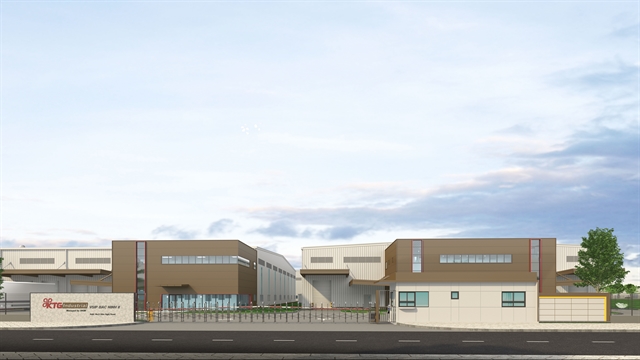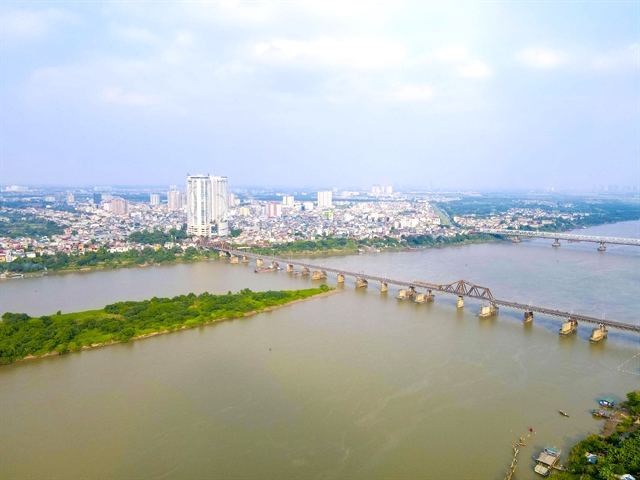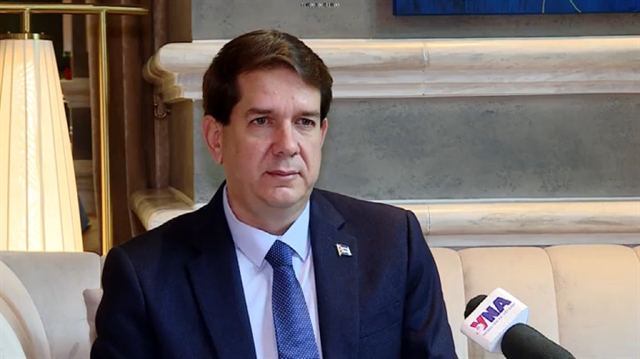 Economy
Economy

 |
| A view of the Red River in Hà Nội. The Red River region's economic growth rate reached 7.21 per cent in the first seven months of this year, higher than the national average. —VNA/VNS Photo |
The Red River Delta region has so far this year achieved multiple outstanding results, affirming its role as an orienting force for Việt Nam's economic growth, Deputy Minister of Planning and Investment Đỗ Thành Trung said.
According to the Ministry of Planning and Investment (MPI), the region's economic growth rate reached 7.21 per cent in the first seven months of this year, higher than the national average. This region ranked third among Việt Nam's six economic regions.
Its total State budget contribution in the first seven months exceeded VNĐ521 trillion (US$20.79 billion), the highest nationwide, making up 41 per cent of the combined State budget revenue.
During this period, the region’s exports were valued at over $80 billion, accounting for 35 per cent of the country’s total export value.
The region attracted $5.7 billion in newly registered foreign investment capital for 645 projects in the January-July span.
In addition, the region had 29,600 newly registered enterprises, up 3.4 per cent over the same period. Meanwhile 14,300 enterprises also resumed their operations, up 6.87 per cent.
The region ranked second nationwide in terms of newly established and resumed operating enterprises, after the Southeast region.
Notably, the Red River Delta region's disbursement of public investment was at about VNĐ55.76 trillion, the highest in the country.
To maintain the region's high economic growth and to affirm its role as an economic driving force, the MPI has recommended that the Prime Minister and chairman of the Red River Delta Coordinating Council, ministries and localities continue to carry out the tasks in the Coordinating Council's 2024 regional coordinating plan and in the Prime Minister's directive issued on June 21, 2024.
Regarding specific mechanisms and policies, the ministry requests all ministries and localities to send their feedback on the draft report on reviewing and proposing specific mechanisms and policies for developing six economic regions. So far, only six out of 17 ministries and three out of 63 localities have sent feedback.
In addition, the ministries and localities should study and select key regional projects to prioritise capital allocation in the medium-term public investment planning for the next six years.
The Hà Nội People's Committee [Administration] needs to coordinate with ministries and branches to implement the Capital Law, and to develop and promulgate documents guiding the implementation of the law.
At the same time, Hà Nội should speed up the development of started projects, promptly remove difficulties and obstacles to ensure completion on schedule.
For projects that are completing investment procedures, the city needs to urgently propose mechanisms and policies to implement them early and send the proposals to the Prime Minister for consideration.
The MPI has also drafted a report on proposing specific mechanisms and policies for socio-economic regions. The report has been sent to ministries and localities for comments.
Aside from the general mechanisms and policies, the MPI is also proposing four specific mechanisms and policies for the Red River Delta region. They include supportive policies for the development of industry clusters, with priority given to the development of marine economic centres as well as research on the establishment of a Free Trade Zone in Hải Phòng City, Quảng Ninh Province.
New cities in Hà Nội region
According to Chairman of the Hà Nội People's Committee Nguyễn Sỹ Thanh, the Capital Law stipulates that Hà Nội is a special urban area. Hà Nội is proposing that the Prime Minister allows the region to implement investment plans to develop Hà Nội's northern area covering the districts of Đông Anh, Mê Linh and Sóc Sơn, as well as Hà Nội's Western City covering Hòa Lạc and Xuân Mai. Then, the capital city will call for domestic and international investment experience and capital.
The plans are aimed at turning Hà Nội into a smart and modern city, becoming a centre for the development of the Red River Delta region and the driving force of the whole country's economic growth.
Hà Nội also proposes that the Government gives support for the city in attracting investment from large corporations to hi-tech parks and industrial parks.
“This will help Hà Nội increase foreign investment and competitiveness in the context of international economic integration. It is especially necessary to have preferential policies and investment supports for hi-tech projects and projects having great impacts on the city’s socio-economic development,” Thanh said.
He also proposed measures to effectively exploit land funds on both sides of the Red River, turning the area into an economic, trade, service, tourism and cultural axis.
Regarding the progress of some important projects, deputy minister Trung said that the project building Bến Rừng bridge connecting Thủy Nguyên District, Hải Phòng City and Quảng Yên Town, Quảng Ninh Province was put into operation on July 17, five months ahead of schedule. Meanwhile, the elevated section of the Nhổn-Hà Nội Railway Station urban railway line, spanning 8.5km, was put into operation on August 8.
In addition, site clearance for developing the Ring Road 4-Hà Nội Capital Region project has also finished.
However, there are many other projects still facing difficulties in development, such as site clearance, slow progress in construction of resettlement areas and relocation of technical infrastructure, lack of supply of building materials and high costs.
According to the MPI, localities in the region must promote removing those bottlenecks to speed up the development of those projects. They include the Ninh Bình - Hải Phòng expressway construction project and three projects at Cát Bi International Airport. VNS

.jpeg)


